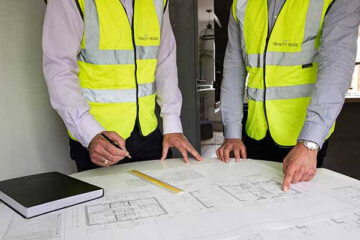Moving to a different house might be a thrilling but also a demanding event. Whether one is traveling from one state to another or across the city, the procedure usually entails packing up one’s whole life into boxes and counting on moving companies— or oneself— to move it securely. Amongst the disruption, one of the major worries is to ensure your items are unbroken and undamaged. Damaged plates, marred furniture, or stolen assets can soon change the thrill of a new house into irritation. Luckily, careful preparation and proper approach may help you to great erode damage potential in transit.
Commence With an Agenda
A flawless move starts with careful organization. Compile a thorough to do list from sourcing packing supplies to engaging movers. Tell which things are delicate, big, or need particular handling. You will have more time to pack carefully and systematically rather than rushing at the last second—a chief source of damage during moves—the sooner you start.
Invest in Good Packing Materials
Using top quality packing supplies is one of the best means to secure your possessions. Although it could be tempting to use free or recycled boxes to save money, weak or overused boxes can quickly give way under strain. Buy stronger, double walled cardboard boxes of different sizes instead. You will also need
Bubble wrappings
Packing foam peanuts or paper
Pull plastic loop
Packing tape.
Furniture pads
Mattress Coverlet
Plastic containers for fragile items
View these materials as coverage for your assets; do not skimp on them.
Pack room by room
Pack room by room to help keep things in order and prevent breakables from getting combined with heavy or bulky objects. Begin from the less often used locations and proceed toward the more frequently visited places. Make sure each box is clearly marked with the destination room and contents in the new house. This also tells movers to treat delicate packages especially gently and assists you during unpacking.
Wrap delicate objects one by one
Wrapping every item separately is essential for fragile pieces like electronics, ceramics, and glassware. Make certain the box has adequate padding to avoid any interior mobility, and also use packing paper or bubble wrap. Put gentle padding between each item and stack dishes vertically—like records rather than horizontally.
Boxes with breakables should be stuffed with extra padding around the sides, bottom, and top to minimize jolts during transit. Call these boxes “This Side Up” and “Fragile” so everyone knows they should be handled with care.
Lock down Torrance and Major Objects
During relocation, furniture is usually vulnerable to dents, scratches, and other types of injury. Whenever practical, take apart things including tables, beds, and bookshelves to make them more manageable and secure for transit. Store all bolts, screws, and small components securely in labeled plastic bags taped to the furniture piece they match.
Cover your furniture in thick blankets or pads to stop dings and scratches. Secure doors and drawers with plastic wrap to prevent them from slamming open during shipping. Put cardboard or padding between stacked elements to stop direct touch for added security.
Protect electrical equipment and appliances
Computers, televisions, and kitchen appliances are costly but fragile. Pack them, preferably in their original boxes with factory supplied foam inserts. If those items are not accessible, use tight boxes with lots of bubble wrap and antistatic cushioning.
Before stashing electronics, back up vital files in possibility of loss or damage. Remove batteries, unplug cords, and neatly organize cables with zip ties or Velcro straps. Label everything so reassembly is easier once you have relocated.
Balance is everywhere
A usual pitfall is over packing boxes—especially with heavy goods like tools or books. It raises the possibility of damaging the objects inside as well as causing boxes to break while lifted. For light, bulky things such pillows or linens, use big boxes for heavier items and smaller ones. To lower stress on the box structure and make lifting safer, distribute weight equally in every box.
Employ a reputable moving firm
Even if you’ve boxed everything correctly, rough vicissitude during loading, transit, or unloading might still cause damage. This is why it is vital to choose a respected moving business. Find companies with experienced in shipping delicate or valuable objects, transparent pricing, and excellent ratings.
Inquire about insurance and if they provide extra protection policies for your possessions. Ask for an at home estimate to let the movers see the extent and unique needs before the moving day.
If you’re relocating in the Southeast, working with experienced Furniture Shippers Georgia can provide an added layer of confidence. They specialize in handling large and delicate furniture pieces, ensuring they are transported with the care they deserve.
Oversee the loading procedure
Be on site during the loading operation if you’re hiring movers to guarantee things are handled in line with your specifications. Mark those boxes that are delicate or need special handling, and watch how boxes and furniture are stacked in the truck. An off center or top heavy load might change during transport, dropping things and breaking them.
For DIY movers, loading takes time, so give it your best effort. At the bottom, store bulkier boxes and furniture; on top, lighter, delicate boxes. Use straps to fasten big objects and keep them from moving about while on transit.
Ready yourself regarding nature
Your things can also be safeguarded by weather. Cover wooden furniture and cardboard boxes with plastic sheeting on rainy days to keep water damage in check. Stay away from keeping heat sensitive materials like electronics or candles in direct sunlight or in a hot moving vehicle for long times in hot weather.
Furthermore, be wary of walking on slippery or wet spots with boxes since a fall could damage your goods as well as cause personal injury.
Open with care
Resist the temptation to speedily rip into packages when you reach your new house. Handle every article carefully and unpack one room if time permits. Clear box labeling and systematic packing will make unpacking far more relaxing and quick. Invest time to correctly recompile furniture and recycle packaging materials.
In essence
Movement need not be a painful catastrophe. With some planning, wise packing methods, and professional assistance when necessary, you could move your things free of unneeded stress or expensive damage. From selecting the correct materials to overseeing the loading process, every little thing is important in guaranteeing your belongings reach your new house just as they left the prior one—secure, sound, and damage free.
Stay in touch to get more updates & news on Zofianasierowska!

